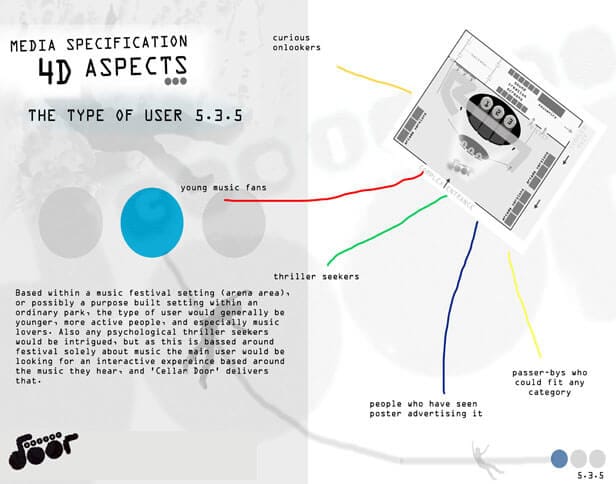About Changemaker The minimalists, Joshua & Ryan, help millions of people learn to live better…
The Cellar Door Experience was a major art installation project that was as much a psychological experiment as it was a fun, social interaction around music.
Challenge: To develop an interactive experience and brand that people associate with the concept of free choice
Cellar Door is effectively an innovation, experience, and branding project in one. It was an art installation project to raise thought in the relationship between free choice, predetermined outcome, and intervention.
We’ve heard of silent discos, Cellar Door is a real-life music installation experience that takes users on a similar interactive experience, only the interactive element takes people through the psychology of questioning decisions they make and how it may affect the outcome as they pass through a music experience.
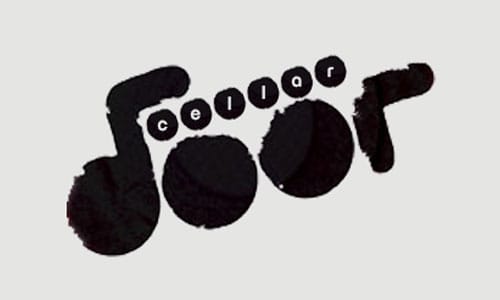

Why Cellar Door?
‘Cellar Door’s’ definition is ‘the passage that we all follow that takes us through our lives’.
While we are all looking for new ways to interact with each other consciously, it’s the subconscious goings-on that really inspired what this project is all about. The concept, inspired from the Cellar Door definition, follows a visual journey and psychological experience that is created through related music and visuals and based around the notions of pre-determination and intervention.
From researching into the psychological effects music has on people’s emotions and moods, and through undergoing a survey into people’s thoughts into possible applications of interactivity within music videos, this concept was drawn up as a fitting proposal for a fun, interactive, psychological experiment.
In essence, it’s about ‘the predictability of random events’, and ‘the gap between travel where you can change or intervene with fate and change the course of life that was pre-determined for you’. It’s all about the idea of What if?
What if you did something different or chose something else to what you did, what if you could choose a different route, and what if we could go back and change/intervene with an event in our life. Would that create a different life? Would we even want to? If we could would that mean that the life we are living now would not have existed because that choice led to something else?
The possibilities are endless, and that’s just the concept that is being played with here.
We often think our lives are very mundane and similar from day-to-day but the number of calculations and choices we could potentially make are mind-blowing. Would we still end up doing the same thing regardless? Is our conditioning too strong to break? If we could break it, would we even know as we can never see two different options at the same time?
To put these questions to the test I had to create an interactive experience and this is where the music interaction comes in.
The Cellar Door Experience
The Cellar Door Experience is essentially an interactive music video, one which doesn’t have a set video compilation but is broken down into segments and blocks that could be put together in many different ways (just like you would do so with a music program as you pick ‘fills’ to add to your song – one could be a drumbeat, and another a cymbal, another a specific guitar riff etc.).
The experience is like a VR game where you start off with 3 tunnel choices.
The aim of the music experience is to ‘build up the song’ as you are in the experience. Each ‘tunnel’ you go through creates a different or added sound towards your music interaction. Visually you also see different image stimuli down each different tunnel.
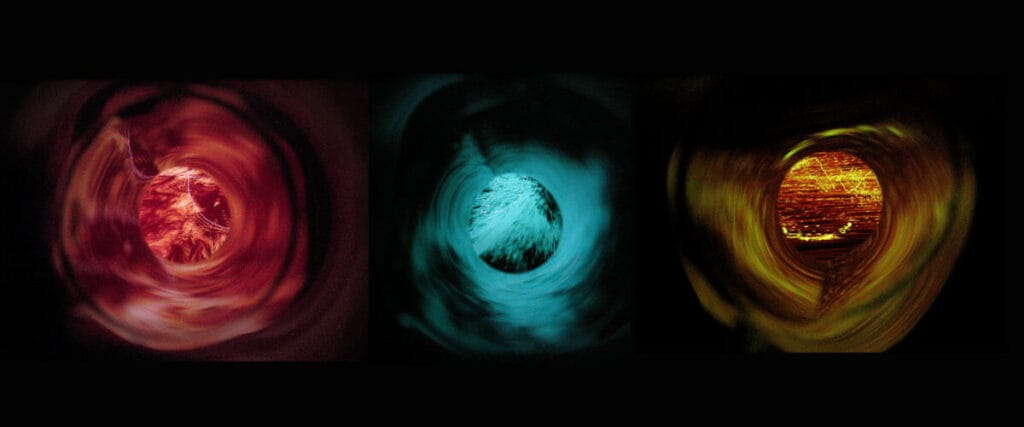

The Pre-Determination Code Explained
As you enter the experience you start by entering a name (code) with your digital handset. This creates a pre-determined route through the tunnel maze personal to you and your chosen name.
The code translation works as follows:
If the letter A was within your chosen inputted name/code then that would translate to the mainframe computer to take you down tunnel1, B = go down tunnel 2, C = go down tunnel 3
Then D = go down tunnel 1 again as there are only three tunnel choices at one choice point (a choice point being a point when your pre-det code comes into focus and then takes you down the next tunnel you are ‘destined’ to be heading down).
Carrying on: E = go down tunnel 2, F = go down tunnel 3, G = go down tunnel 1, and so on through the alphabet.
So if your name is Fred Flintstone your pre-determined tunnel path would be: 3321 3332212322. Then as press start and the video would begin and you’d be going down the pre-selected tunnels in your name order (unknown to you of course so you couldn’t try to ‘cheat’ the system by trying to think of the right answer, right tunnel to go down, or what the correct inputted name/code is because there isn’t one).
In each tunnel, you’d have a different sound added or changed and the idea is to build it up into a personalised song (no two people would hear the same exact song, but they would have the same tunnel ‘sound blocks’ somewhere within their personal maze as everyone else).
Once all the numbers have gone through one sequence it would simply loop back to the start number again and continue to do so for the five minutes allocated, but due to the complex linking of the tunnel maze tunnels, you will probably be going everywhere and anywhere within the maze at some point.
If you were to sit back and enjoy a visual experience your pre-det code would just follow its course, and you can assess at the end whether your pre-det code was ‘destined’ to reach the ‘special green’ area, which in effect is the area within the maze where you’re aiming to get to – it’s your Cellar Door, your predetermined passage – will you be successful or not by fate or will you find intervening more helpful (explained below)?
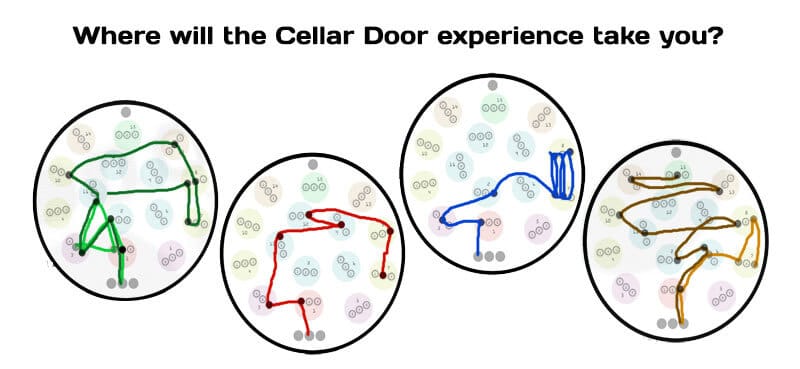

Due to the inputted fields tunnel translation code you’re free to try out as many different names and words as you wish each time you play, but you can only input this at the start of each game.
You might never visit the same tunnel area twice, or you might be around the same area dozens of times. This is because some tunnels loop round to the tunnel it just came from, and therefore the possibilities are endless.
Anyone, or any name, has a good of a chance as anyone else to find their ‘Cellar Door’ – it’s just a case of each individual’s psychological judgement, and luck, and to see if that judgement works for or against them as they interact through the tunnels.
The Intervention Part Explained
You don’t just put in your predetermined code and let it go. You can, but the interaction is a lot more fun when it is interactive. Therefore you also have side paddles to use so you can change the direction when you hit a choice point. You either press down the left or the right paddle and the pre-determined direction will change for that tunnel, before falling back into its pre-determined path again, unless you manipulate the path again at another choice point.
But of course, as you have changed the direction of the pre-determined path you will have promoted a new path of pre-determination from the point you intervened! Your original path won’t ever be seen now.
Being a psychological experience you are stimulated (teased if you like) to see where the other tunnels would’ve taken you, whether they would’ve been the right direction for you or not! Your own curious mind (psychological judgement) promotes doubts on your own pre-determined course and promotes a lot of questions as to what other choices would lead to (a lot like real life).
Some players would prefer to intervene for a more active level of interaction, some would prefer a psychologically curious passive approach. Then you get those who would like to go a step further still.
The Interactive Game & Points Element
Being an ‘interactive’ experience, and not just a personal experience, you can play against two other players at the same time, as you battle it out to gain enough points to open up your Cellar Door and then try to find it (or let pre-determination take you there).
You gain points two ways. Each time you go through a tunnel you gain points, but you won’t know which tunnels give you more points at first (until you try to learn how the tunnels all connect, which isn’t easy).
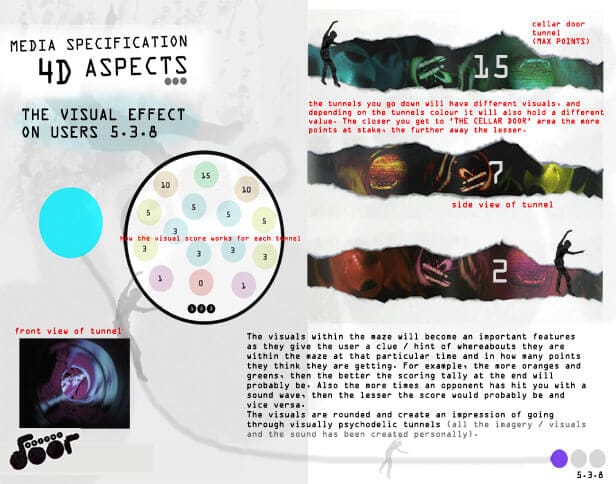

As this is an interactive ‘music’ video experience you also have the opportunity to intervene in a way that fits around sounds, as you also earn points when you ‘shoot sounds’ at nearby opponents (a bit like Mario Kart). You can sense opponents are nearby through the surround sounds becoming louder or different (to their sound ID).
If they shoot you then you lose the points of the tunnel you are shot in to them and vice versa. You can also collect sound bites within tunnels you pass to use as weapons to ‘shoot sounds’ (or to add layers to your song).
The Sound ID Part Explained
An important point to make is that you never ‘see’ each other within the ‘virtual tunnel maze’. You simply hear each other’s sound ID go around the maze, which in effect adds to the music along with the tunnel noises heard within each tunnel maze, and through the sound bites/fills you add.
When you hear sounds coming closer towards you, you then instinctively think that a competitor must be nearby and you shoot off your sound ID using the fire button on the paddle control, and that creates that ‘sound wave’ within the maze. And because competitors are at different areas within the game they will each hear the sounds at different velocities to each other and thus each person will still have a sound experience personal to them, as well as a unique visual experience due to the path around the tunnels they go.
The sound ID that each competitor selected at the start would be the sound other competitors recognise as being the sound that suggests another competitor is near.
So the idea around the sounds is really based on that psychological urge to shoot your sound weapon, and when you do shoot off the weapon a short sound trail (which is also visual) is briefly left.
If you think you are being fired at then you might want to change your path at the next choice point, or maybe not!
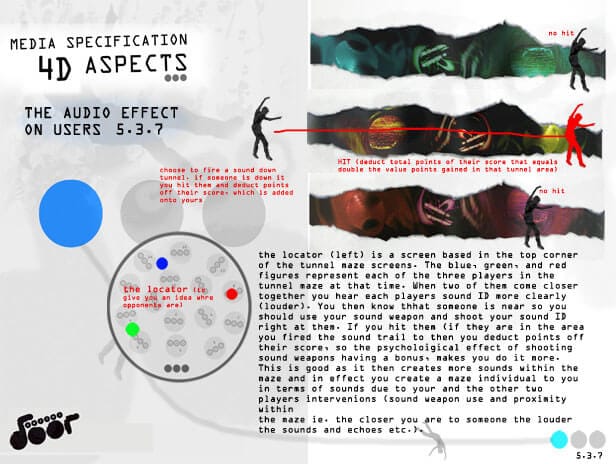

About The Music Sound Effects
Each game could have a different music template or genre style, but your aim is to build up the segments in the song that is missing, which is why you need to collect sound bites/fills along the way. Each tunnel you pass either adds or changes a song segment so the aim is to find the right tunnels to help you build up the song elements.
Of course, you might pick up sound bites and choose to use them as sound wave weapons too, which means you’d have to collect them again to use in the song (they would automatically be added to your song unless you pressed the shoot button and one would be taken off it and used as a sound weapon instead).
Along with these sound elements, there’s also the template backing music (otherwise it would be too silent to begin with). The original prototype music was created to be dark and pulsing (like you are going through tunnel sewers). Some tunnels may ‘feel’ slower than others simply because the music has become quieter in that tunnel segment etc.
The game is played over 3-5 minutes (an average songs length), in which time all three contestants effectively create their own combined music video – ie, due to the sounds they created and where they were in the maze throughout the game.
Everyone creates their own individual song which is created from their own pre-determined and intervened path.
The Visual Part Explained
There are many potential visual elements that could be employed too.
Considering the whole idea links around pre-determination and choices, and effectively picking up things in different orders from each other, a fitting visual means used as an example could be describing a story or lyrics.
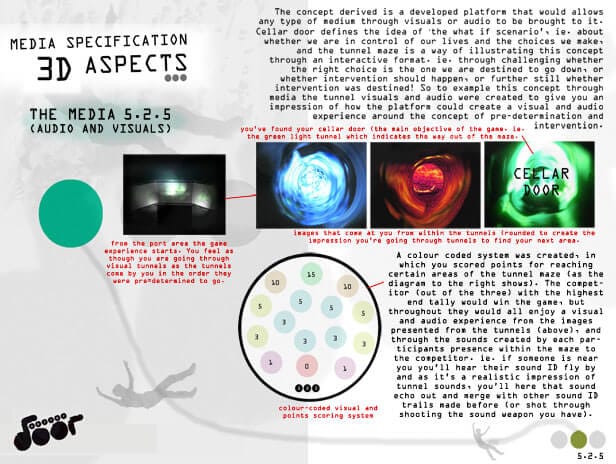

Depending on the order you go through the tunnels you would have a different perspective of the overall story to someone else who went around the tunnels in a different order. This is because you all see the same story, but just in a different order.
Also, you might see the same part of a story more than another part, or before other parts, and therefore this would stick in your mind more than the other parts (showing our confirmation biases and strength of first impression – we tend to take what we hear first as fact more than what we hear later), whereas some else may have seen another part more than you, or first, and have a different perspective altogether.
The idea is that you all come out with the same story, but while having an interactive experience through it, you would each come out with a different perspective (and subconscious experience) from each other – which promotes something to talk about afterward, and is part of the psychological experiment this interaction promotes.
e.g imagine how a band might persuade people in different ways or how we might see certain visuals or perspectives of different characters and likely prefer one over another depending on the edits or order we saw the visuals).
You could also simply have a different word or sentence in each tunnel and make up your own story, or funny story.
Another element that played a part in the interactivity within the simulation of the created prototype was the use of colours.
Different tunnels and tunnel areas could show different colours to each other to aid with a points scoring system of obtaining more points for being in certain areas of the tunnels. Of course, the user wouldn’t have a map telling them visually where each coloured tunnel is situated, but they do become more familiar as time goes on as to how different colours may link up and lead up to the ‘special green area’, and of which colours pose problem areas on their score.
These colours could represent moods of getting ‘hotter’ or ‘colder’ in the pursuit of the ‘Cellar Door’, and may also offer subliminal unconscious messages through the use of these senses, such as flashes of certain objects that indicate your presence at a certain point in the ‘tunnel maze’.
The ‘Concepted’ Real Experience Explained
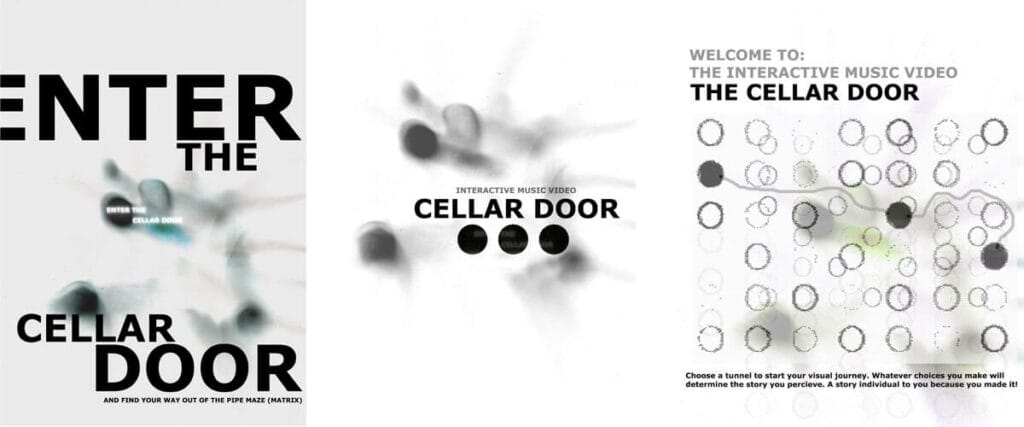

Whilst the interaction takes place in VR-like pod simulators, there’s also the possibility of creating the decor around the experience like an installation that can be used in a festival or theme park setting.
For this eventuality, a real-life physical ‘pod’ installation was conceived.
Within the pod area the complex’s music could promote the experience of being in the tunnel yourself as it’s played on a large widescreen, in a darkened room, like an entrance to a theme park ride.
You then enter one of 3 simulator chairs which then take you into the pod. To add to the feeling of literally moving through tunnels the simulator chair would vibrate and would lean with you from side to side adding to the realism.
Each user in each of the 3 pods would then set their chosen name and wait for a start countdown. They would then go through the game just like the VR version but feel like they are really within the tunnels. There could be onscreen versions of the game outside the pods too.
In a quick mockup on what the installation could look like, the queue for the experience could loop around the top up a ramp/stairs to overlook the goings-on inside the pod. They get a glimpse of what to expect and as it’s one-way glass, and soundproof (the competitors aren’t put off by the onlookers this way).
Following looping the queue round the que-ers are kept entertained by screens around them doubling up as rules explanations and visuals from what’s going on inside the current pod game, or recent photo snapshots.
Then they reach the front following going down the ramp again. Here they wait for the current game to finish and then enter the simulator chair. When all is clear the pod flap opens ahead of them and they proceed to enter the pod on the moving chair. The previous players will have exited the pod in a different exit.
Leading up to the ‘pods’ the suspense builds as sounds build up and screens of visuals play around them promoting the game (all triggered on a timer by the initial sensor on the smart simulator chair). The chair then reaches the ‘pod’ area and snaps in place to a fixed position.
Another sensor is triggered which closes another flap door behind you so now it’s just you and the pod. The flap door and surrounding walls are soundproof so you only hear the noises from inside the pod as a realistic inside tunnel experience is created.
Within the ‘pod’ the simulator chair tilts slightly so you are in the ‘game position’. Here you are told one last time quickly about the game rules and how to use the simulator chair, and then after entering your chosen name and selecting a sound ID, you are ready.
After that, the computer ensures all three participants in that game have all gone through the same process and are all ready. Then when all is set the sounds build up as the countdown to the game start begins. You then play the game and leave through a different exit.
The simulator chairs would return to the starting positions outside the pod empty. The idea is to suggest how the players who went into the pod don’t come out the same way as they have found their ‘Cellar Door’.
The Post Real Experience Explained
After the game, you are led to the ‘post-experience’ zone to see photos of you in the simulator and collect your bags/possessions that you handed to assistants to put in lockers before entering the pod.
You also have the opportunity to collect your ‘Cellar Door Pathway’, which illustrates the tunnel areas and colours you went to in that order, as well as the tunnels and colours (and resulting points scored from them) that you would have visited in the game IF you had kept within your pre-determined sequence.
You can see when and how many ‘green cellar door tunnels’ you managed to get, as well as whether your pre-determined code would have worked for you or against you, and if intervening was the right choice for you (or were you pre-determined to intervene?!).
This area also holds the ‘post-experience sound creation screens’, where you can use credits gained from the added scores of the games you play to buy more sound IDs to use in your next experience. You can gain points from the arcade machines as well, but not as many as the real experience pod. These credits go into creating better sounds or preferred sounds using the ‘sound creator program’.
You can play as many times as you wish, and the installation exit just leads round the side to where the main front entrance is again so the whole complex is easy to navigate.
A Case Study From:







